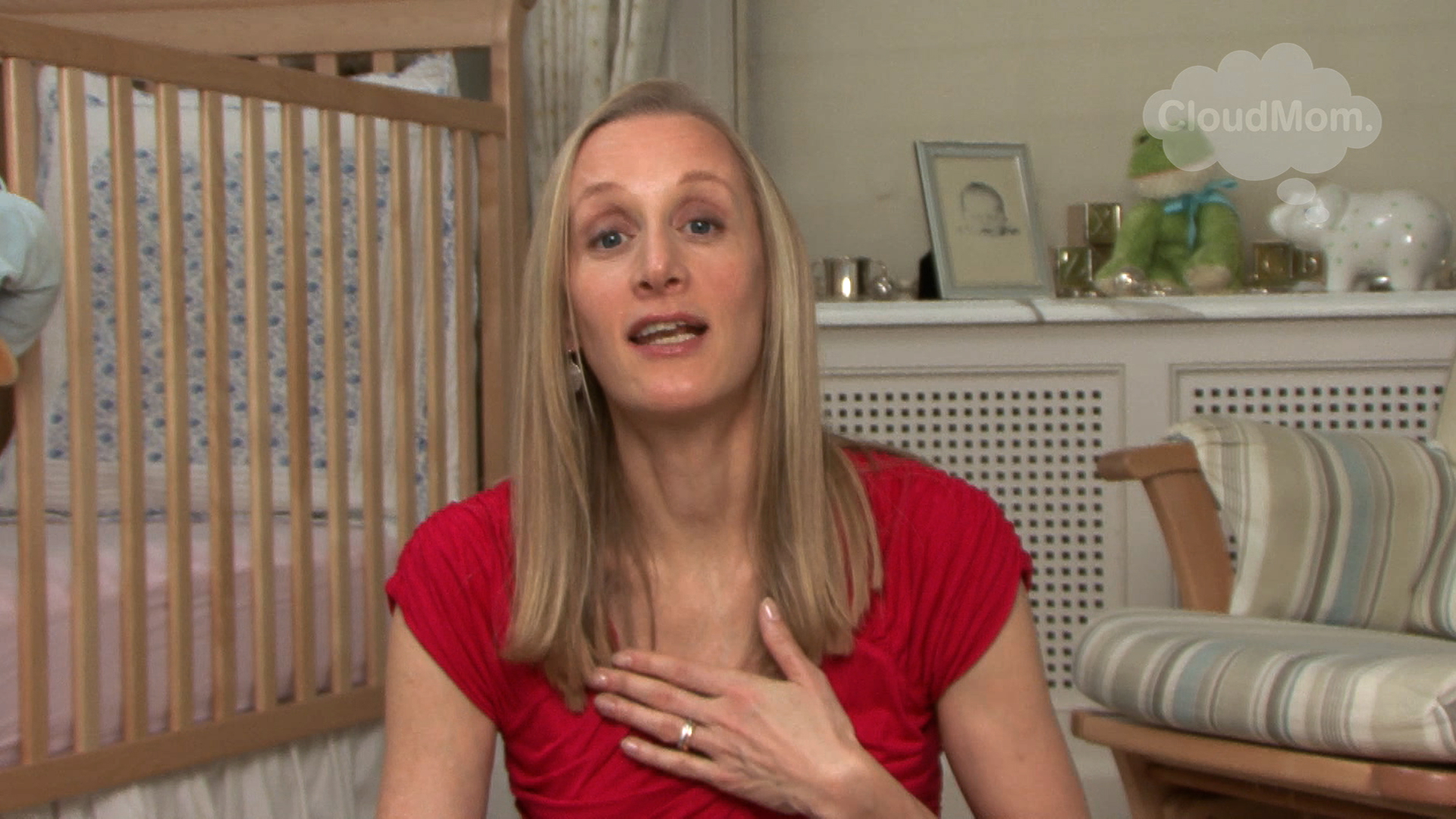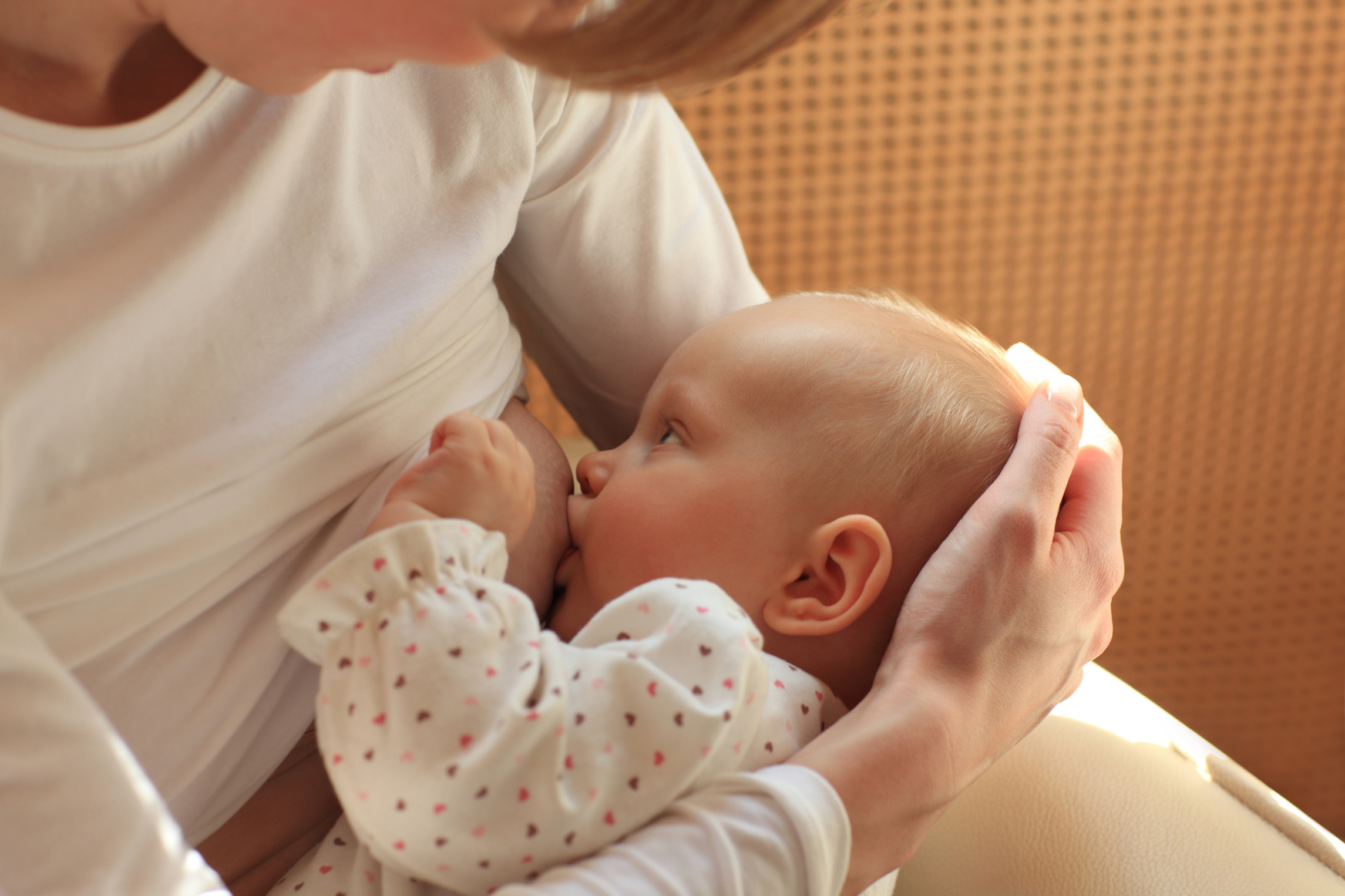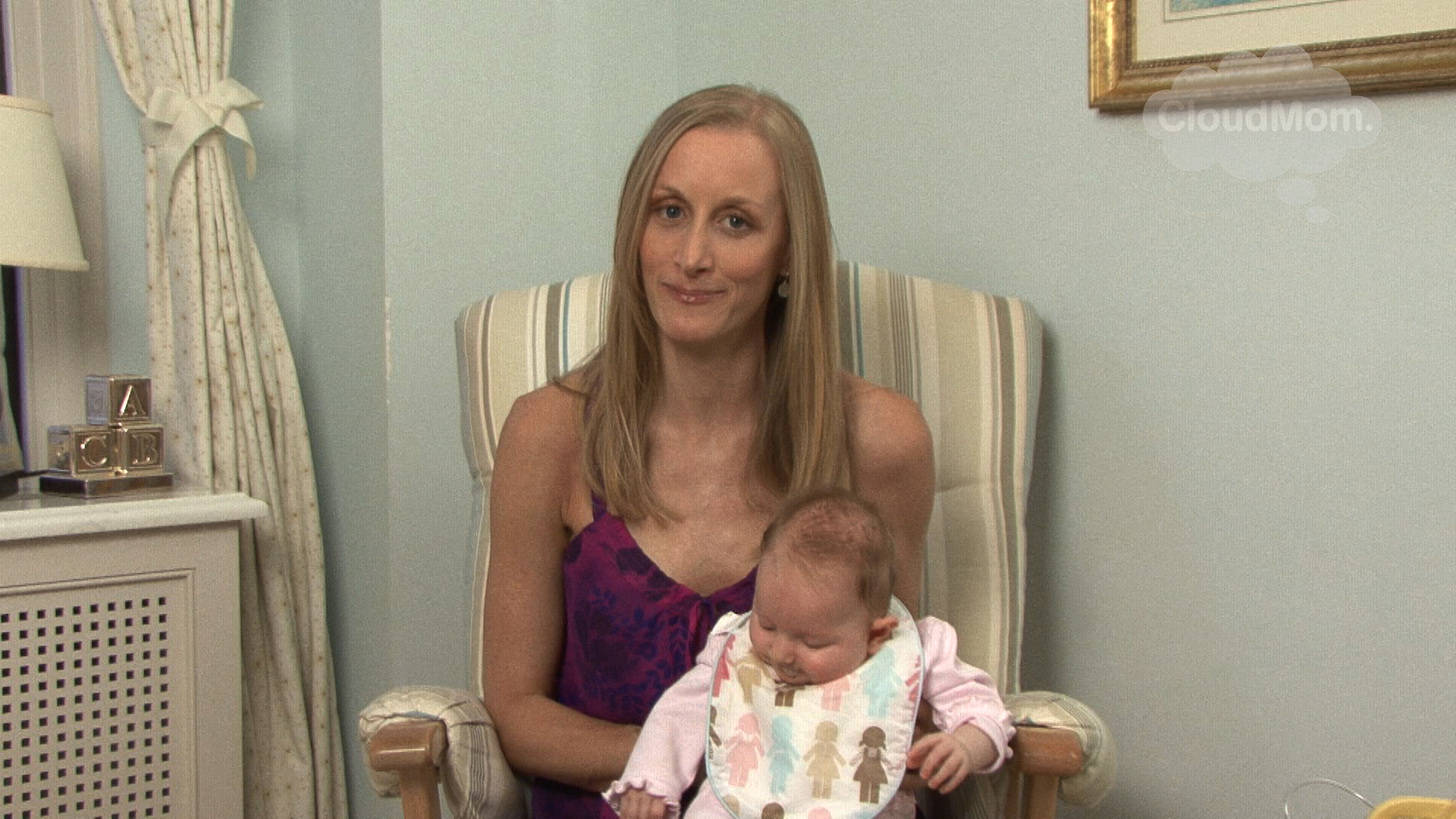How to Breastfeed a 6-Month-Old Baby
- June 26, 2023
- by Melissa Lawrence
Hi guys, Melissa here. Welcome to my month-by-month breastfeeding series. I started this series with my How to Breastfeed a Newborn Baby video and post and plan to continue for as long as I am able to breastfeed my sixth baby Bracey. Having breastfed six children, I’ve faced numerous breastfeeding challenges: blocked ducts, mastitis, milk bleds, nursing blisters and fissures, black and blue nipples, leaky boobs, low milk supply, high milk supply, a distracted baby, breastfeeding with toddlers and older children in the house, and balancing breastfeeding with supplementing with formula, pumping, going back to work, and solid foods. I’ve had my good days and my bad days, my highs and my lows. I’ve found various solution to the breast feeding problems I’ve faced that I’m looking forward to sharing with you. I hope my advice helps you as your pursue your own breastfeeding journey. Check out my Baby Month by Month: 6 post for more information about your 6-month-old baby.
Breastfeeding Positions for a 6-Month-Old Baby
Let’s start off with how to hold an older baby while nursing. A 6-month-old baby is heavier than a newborn, of course, so your breastfeeding positions need to adapt to allow you to support the weight of the baby and hold them tight while taking pressure off of your upper back and neck. Older babies tend to move a lot. Stay relaxed and go with the flow since they won’t stay still the way your newborn did.
Early Breastfeeding Positions for Newborns
Let’s quickly review the recommended breastfeeding positions for newborn babies so that I can explain how to mutate this to hold your 6-month-old. With a newborn, you want to hold your baby in a horizontal (as opposed to vertical) position, and you want to encourage your baby to dip their head back so that they keep their mouth open. This will help the baby latch on.
Cradle Hold Position for Newborns
The cradle hold is the most popular position for newborn breastfeeding, and a pillow can help you keep the baby at the right height and in a horizontal position. Make sure your baby’s stomach lies against yours, tummy-to-tummy with you. The cradle position involves holding the baby up with your arms crossed underneath the baby for support.
Cross-cradle position for Newborns
A variation of the cradle position, the cross-cradle position allows you to hold your baby in the arm opposite to the breast you are feeding from. So if you are feeding from the right breast, you cradle your baby in your left arm, supporting them with your left forearm. A pillow underneath can help. Use your right hand to squeeze your right breast a bit to allow your nipple to protrude. This helps a younger baby to latch on.

Boppy Nursing Pillow Original Support, Neutral Jungle Colors, Ergonomic Nursing Essentials for Bottle and Breastfeeding, Firm Fiber Fill, with Removable Nursing Pillow Cover, Machine Washable


Boppy Anywhere Nursing Pillow Support, Soft Gray Heathered with Stretch Belt that Stores Small, Breastfeeding and Bottle-feeding Support at Home and for Travel, Plus Sized to Petite, Machine Washable


Boppy Nursing Pillow Best Latch, Gray Pennydot Leaf Stripe, Lactation Consultant Created, Firm Contoured and Plush Sides for Breastfeeding Options, Padded Belt, Plus Sized to Petite, Machine Washable


Boppy Nursing Pillow Luxe Support , Gray Brushstroke Pennydot, Ergonomic Nursing Essentials for Bottle and Breastfeeding, Firm Fiber Fill, with Soft Removable Nursing Pillow Cover, Machine Washable


Boppy Nursing Pillow Organic Original Support, Sand Criss Cross, Ergonomic Nursing Essentials for Bottle and Breastfeeding, Firm Hypoallergenic Fiber Fill with 100% Organic Cotton Nursing Pillow Cover


Boppy Nursing Pillow Luxe Support , Pink Sweet Safari, Ergonomic Nursing Essentials for Bottle and Breastfeeding, Firm Fiber Fill, with Soft Removable Nursing Pillow Cover, Machine Washable


Momcozy Original Nursing Pillow and Positioner - Plus Size Feeding Pillow | Breastfeeding, Bottle Feeding, Baby Support | with Adjustable Waist Strap and Removable Cotton Cover, Navy Blue


Momcozy Nursing Pillow, Plus Size Breastfeeding Pillows for Ergonomic Support for Mom and Baby, Security Fence Baby Nursing Pillow | Breastfeeding, Bottle Feeding and Removable Cotton Cover




PILLANI Nursing Pillow for Breastfeeding, Original Breast Feeding Pillow for Mom & Baby Support, Removable Cotton Cover, w/Adjustable Waist Strap, Newborn Essentials Must Haves, Baby Registry Search
Side-Lying Breastfeeding Position for Newborns
The side-lying breastfeeding position allows you to lie down on your side, facing your baby, and take all the pressure off of your back and neck. Rotate your baby onto their side and align their nipple with your breast. I used this position during night feedings when my babies were little and it helped me a lot.
Finding a Comfortable Breastfeeding Position with an Older Baby
When it comes to an older baby, remember these earlier breastfeeding positions while adapting them to your new circumstances. The cross-cradle position inspired me to come up with something that I found to be a life saver: I call it the cross-cradle pretzel hold. I cradle my baby’s head in my elbow and wrap the hand from that arm around my baby’s upper leg. Then, I lay my other arm underneath my baby. This gives me a secure hold that takes the pressure off of my upper back and neck while allowing the baby some wiggle room to move around.
How to Handle a Distracted Baby while Breastfeeding
In addition to figuring out the proper breastfeeding position for your 6-month-old, you’ll need to grapple with a distracted baby who is becoming increasingly curious about the outside world and will keep ripping themselves off the breast to look outward, which is certainly more interesting than staring at Mommy’s torso.
Baby Twisting, Pushing, and Pulling Away while Breastfeeding
You might be asking yourself “why does my baby move so much while nursing.” Babies this age can get so active that you sometimes feel as if you are steering a boat in rough waters. I’ve noticed with Bracey that he sometimes pushes me away and then pulls hard at the nipple. I think this resistance gives him a greater quantity of milk faster. A rowdy baby is a healthy baby. No worries here but just try to find a way to hold on tight and keep encouraging your baby to get back onto the breast and finish the feed.
Is a Distracted Baby Weaning from Breastfeeding?
Many people assume that a baby who is getting distracted is weaning and no longer interested in breastfeeding. I have never made that assumption. Rather, I have just assumed that my baby was developing and growing more curious about the outside world, and I’ve tried to come up with ways to satisfy their curiosity while keeping them interested in breastfeeding.
When your baby rips themselves off the breast, use the opportunity to burp your baby, to talk to your baby, and to even to read to your baby. Then, put your baby back on the breast. Keep doing this until your baby has burped, is awake and is rejecting more food. Here are some more tips when it comes to handling a baby who gets distracted during breastfeeding sessions:
10 Tips for Handling a Distracted Baby while Breastfeeding
- Stay calm and don’t get upset. Make the experience fun.
- Find a quiet place where you can be alone with your baby.
- Dim or turn off the lights.
- Read, sing, and talk to your baby. Your baby can practice holding and turning pages of the book when you burp them.
- Switch sides until the let down occurs, then drain one breast before going to the next side so that your baby gets as much of the nutritious hind milk as possible.
- Breastfeed immediately after your baby wakes up.
- Breastfeed when your baby is sleepy and tired.
- Breastfeed in small amounts every chance you get (on demand feeding).
- Hold your baby very securely, and walk around in a safe area with them when you nurse. Read a paperback book that you can hold in one hand while doing this.
- Hold your baby securely, stand up from the nursing chair and slowly spin them around to get them to suck.
For How Long Should a 6-Month-Old Baby Breastfeed
A 6-month-old baby will eat more quickly and efficiently than a newborn, so keep that in mind. Generally speaking, expect your nursing sessions to take about 20-30 minutes. The fact that your baby will get distracted and you will need to spend time luring them back onto the breast can slow down the nursing sessions. There is no rule when it comes to the length of a breastfeeding session.
How often Should I Burp my 6-Month-Old Baby when Breastfeeding?
A 6-month-old baby will burp less frequently than a newborn, maybe 3-5 times during a nursing session. You can also put your baby on your lap to burp them when they get distracted and turn away from the breast, and use the burping session to give them a bit of exterior stimulation so that you can then get them focused on the breast again.


Organic Burp Cloths Baby Girl, Boy - 6-Pack Large Baby Burp Cloths, Burping Cloths for Babies, Boys, Girls, Cotton Burp Cloth, Spit Up Burp Rags, Newborn Burp Clothes, Burp Cloths Neutral(Neutrals)


Organic Burp Cloths for Baby Boys and Girls - 5-Pack Super Absorbent Burping Cloth, Burp Clothes, Soft & Plush Newborn Towel, Milk Spit Up Rags, Burpy Cloth Bib for Unisex, Burping Rags(Soft White)


Konssy Muslin Baby Burp Cloths Sets for Unisex- 6 Pack Large 100% Cotton Burping Clothes for Newborn, Baby Girls and Boys


Konssy Baby Burp Cloths Sets for Unisex- 6 Pack Large Cotton Burping Cloth for Newborn, Baby Girls and Boys


Romart Muslin Burp Cloths Baby Burping Bibs 100% Cotton 6 Pack Large Soft Absorbent Washcloths Spit Up Rags for Newborns Baby Boy or Girl


Romart Muslin Burp Cloths Sets: 6 Pack Unisex Large Size Baby Spit Up Burping Rags Baby Burp Cloth with Snaps for Baby Boys and Girls


MairMore 5 Pack Muslin Baby Burp Cloths- Neutral Muslin Burping Cloths for Baby Boys Girls and Newborn Towel, Unisex- Large Absorbent Burp Cloths-20 x10 Inches


Baby Burp Cloth - 5 Packs Organic Cotton Two Layers Burping Rags, Large Contoured Ultra Soft and Thick Absorbent Towels, Unisex for Boys and Girls, Baby Shower, 19"x9"


MUKIN Baby Burp Cloths - Burp Cloth Sets for Unisex. Perfect for Newborn Baby Burping Cloths/Burp Bibs. Newborn Burping Rags for Boys and Girls (White)


Getthebeauty-style Muslin Burp Cloths for Baby Boys and Girls - Burping Cloth, Burp Clothes, Newborn Towel - Burpy Cloth Bib for Unisex, Boy, Girl (5PCS)
How Do I Know my Baby is Full when Breastfeeding?
Figuring out whether your baby has ingested enough breastmilk can be tricky and many moms worry about this. Keep breastfeeding until your baby is awake, burped and rejecting more food. You will know this is the case when your baby turns down the nipple when offered to them. This is how you know that your baby has gotten enough breastmilk.
How much Breastmilk should a 6-Month-Old Baby Consume?
As a nursing mama, you’re likely asking yourself how much breast milk is recommended for a six month old. The conventional formula for breastmilk works as follows. Take your baby’s weight in pounds. Multiply that by 2.5. And then divide by the number of feedings. The average 6-month-old baby boy weighs 17 lbs 8 pounds (7.9 kilos) and the average 6-month-old baby girl weighs 16 lbs 3 oz. Let’s assume your baby weighs 16 lbs. Multiply that by 2.5 and you get 40. So your baby needs 40 ounces of breastmilk over a 24 hour period. Now, divide that total number by the number of feedings (5). Your baby needs approximately 8 ounces of breastmilk per feeding.
Why am I Experiencing a Drop in Milk Supply at 6 Months?
Since your baby will begin to eat solid foods at around this stage, you will notice a slight decrease in the amount of breast milk you are producing. If you are concerned about your milk supply, keep your baby close and breastfeed as much as possible. Breastfeed before giving solids. Stay hydrated. Pump for just a few minutes after each feed. And resist the urge to supplement with bottles because every time you do that, you are not signaling to your body to produce the milk. It’s a demand and supply equation and the more you say to your body, “produce the milk”, the more the milk will come.
How Much Breast Milk should I Produce at 6 Months?
My doctor advised me not to focus too much on the quantity of breast milk I produce or pump since this can cause unnecessary anxiety. Generally speaking, you want to produce enough breastmilk to satisfy your baby and fulfill their nutritional needs. At the end of a nursing session, your baby should appear awake, burped, and rejecting more food. If your doctor is happy with your baby’s growth and development, there is no need for concern about your breastmilk supply.
Balancing Breastfeeding at 6 Months with Solid Foods
The easiest way to balance breastfeeding sessions with the introduction of solid foods at around 6 months of age is to give the milk first. Breastfeed your baby when they wake up in the morning, and then give them their solids. Same thing when it comes to the mid-day feed, the mid-afternoon feed, and with the early evening feed. At each point, you want to breastfeed first because for the first 12 months of your baby’s life, breastfeeding remains the primary form of nutrition. Feeding a frustrated, hungry baby solids on an empty stomach is also very challenging. Getting a bit of breastmilk in there will help, making your baby happier and more relaxed as they sample solids. Wait a few minutes after a breastfeeding session before giving the solids. The quantity of solids at this point is quite small, after all.
How Often Should a 6-Month-Old Breastfeed?
If you’re wondering “how often to breastfeed a 6-month-old,” a baby this age has transitioned to eating every 4 hours and will eat approximately 5 times a day according to a schedule similar to the one I describe below. If your baby is waking up at night, try the late evening “top-off” feed and focus on not going longer than 3-3.5 hours between breastfeeding sessions during the day. When a baby is not sleeping through the night, experts recommend feeding every three hours from the start of a feed, but sometimes this can make things too difficult because the baby is sleepy and not hungry. I found in this situation that every 3.5 hours worked better.
Breastfeeding Schedule for 6-Month-Old with Sleep and Solids
Here is a breast feeding schedule for a 6-month-old who is nursing and beginning to eat solid foods. Use this as a loose framework to give your day a bit of order and structure. You can adapt this breastfeeding schedule to suit the time at which your baby wakes up. The general idea with a schedule like this is not to deny your baby the breast or food. You should always feed a hungry baby! The idea, rather, is to keep track of feedings so that your baby is awake and feeding regularly during the day and getting the rest and nutrition they need. This will help them to sleep well at night, and will allow mamas and papas to also get some much needed rest.
- 7am — sleep 9:30-11am.
- 11am – breast then 2-3 tablespoons of single food vegetable puree. Sleep 1:30-3pm.
- 3pm — breast then 2-3 tablespoons of single food fruit puree. Sleep 6-7pm.
- 7pm — breast then 2-3 tablespoons of corn or rice cereal mixed with breastmilk. Sleep 8:30-11pm.
- 11pm — sleep at 11:30pm. This can be called the “top off” feed. Some babies will do a late night 2-3 am feed in lieu of this top off feed.
*If your baby is not sleeping through the night, continue to feed every three hours from the beginning of a feed.
That’s if for now and see you back next month for How to Breastfeed a 7-Month-Old!









Comments